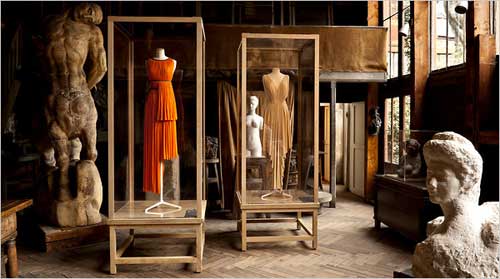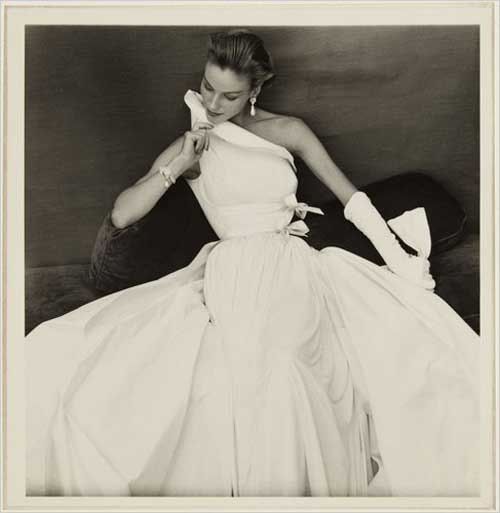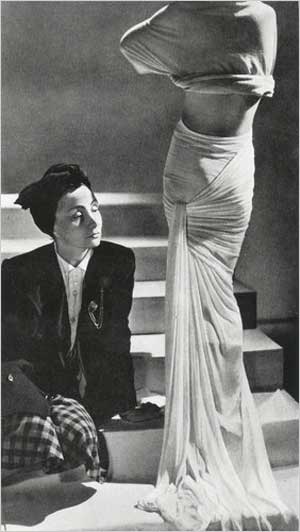
 Sculpture News at SculptSite.com
Sculpture News at SculptSite.com
Madame Grès Sculpture |
| New York Times | www.nytimes.com By SUZY MENKES Madame Grès as SculptorPARIS - "I wanted to be a sculptor - for me it is just the same to work with fabric or stone," claimed the designer whose dress hangs in chiseled pleats and folds among mighty statues. Madame Grès, the legendary creator of the sensual austerity of a draped dress, died in obscurity more than 17 years ago. But her (invented) name - the pseudonym with which her artist husband signed his paintings - has sprung back to life in Paris this spring. It would be a fair guess that the exhibition at the museum dedicated to the French sculptor Antoine Bourdelle will have a similar impact on the fashion world as last year's Yves Saint Laurent Paris retrospective. Prepare to see shape and drape as an evolution of 21st-century minimalism. The most extraordinary sensation in "Madame Grès: Couture at Work" (at the Musée Bourdelle through July 24) is that the dresses - especially the goddess evening gowns - could walk right out of the museum and onto the red carpet. Even the daytime outfits made in the 1930s by Germaine Krebs - the designer's real name - have the allure of simplicity and complicity: subtly hidden couture work and a respect for the female body. Why does this exhibition seem so timeless and exceptional? Much of the credit goes to the curator Olivier Saillard, who is a rare combination of historian and showman. You see it in the dramatic way that he has placed a burned-orange dress in the dusty plaster-and-putty setting of the original Bourdelle studio, or a sweeping black gown in the solemn, religious bedroom of the sculptor. The reason for this face-off between sculpting and draping is partly fortuitous: the Musée Galliera, where Mr. Saillard is the new director, is undergoing renovation. But the result is more than a simple switch of locations. It inspires the visitor to think about the poetic work of human hands. And how different fashion was in the days when clothes were fitted and stroked to the body, rather than the approximate ready-to-wear. "She is a woman who counts for so much in the history of fashion," said Azzedine Alaïa, one of the rare designers whose struggle between fabric and body produces exceptional creations. When the Madame Grès business was liquidated and the name bought by the Japanese company Yagi Tsusho in the late 1980s, Mr. Alaïa collected archive pieces for the Fashion Museum in Marseille. They are on show along with Galliera's large collection, including the period between 1934-42 when the designer's house was known as "Alix." The most striking thing about the work is how early the Madame Grès philosophy was set in stone (an apt metaphor for her sculptural style). The draped cloth in a whorl across the hips on a 1946 dress is echoed by a swirl at the back in the 1970s. Every piece was literally drawn in the round, as seen in the cache of 100 sketches on show that includes a 1956 romper suit, ballooning gently at the hips and a full-skirted dress with curving sailor collar. The drawings came to Galliera through the benevolence of Pierre Bergé at the Yves Saint Laurent Foundation, who bought and offered 3,000 drawings out of respect for Madame Grès. Even the colors remain constant: rust red, green, daffodil yellow, chestnut - appearing in a single dress in the 1970s. Photographs also enrich the show. Mr. Saillard has placed beside the white goddess dress in a glass box in the sculpture gallery a famous 1954 black-and-white image by Willy Maywald of a partly naked model fitting a 1939 Alix dress. By contrast, the narrative imagination of Guy Bourdin shows models in movement in swirling Grès pleats in 1976. The large exhibition has perhaps too many of the late designs and of the daywear which, however brilliant the construction of a cape coat or a short pleated dress, remains rooted in the 1940s. More intriguing are the donations of specific clients such as the Duchess of Orleans or of Windsor, and the final creation of Madame Grès: a swelling-bodice dress ordered in 1989 by Hubert de Givenchy, that looks remarkably like the work of Rei Kawakubo. What do we learn from the show? That fashion can be an art form only with rigorous craftsmanship. Or as Mr. Saillard says of Madame Grès: "The apparent simplicity of her work conceals extremely complex skills." Madame Grès: Couture at Work. Musée Bourdelle, Paris. Through July 24. |
 Out of the ordinary? Probably so, but then again maybe not... Because, when one thinks about it, sculpture is so ubiquitous in our lives. It doesn't have to be steel or stone! I thought this excellent article from the New York Times by Suzy Menkes was an good mind bender, so to speak for our readers - enjoy! |
 Pierre Antoine Dresses from Madame Grès on display at the Musée Bourdelle in Paris. |
 Henry Clarke/Galliera An evening gown from Madame Grès in 1954. |
 Eugene Rubin/ FNAC/Centre national des arts plastiques, Paris Madame Grès with one of her designs circa 1946. |
Sounds of Sculpture ....
This Madame Grès article made think me think of time and going back. Here's a great Roy Clark song "Yesterday" enjoy!
Submit your SCULPTURE NEWS.
It's easy, just send us an e-mail
(click on Submit News in the left menu) with your pertinent information along with images, we'll take care of the rest. Sculpture makes our world a much better place in so many ways!
SculptSite.com, along with Sculptors and their creative genius all helping to bring the beauty and message of Sculpture to a hurried world.

